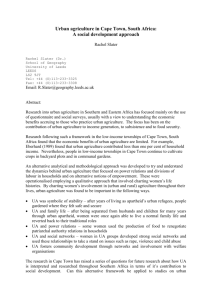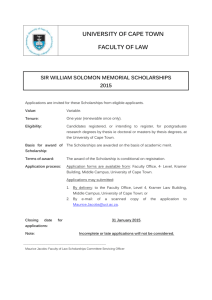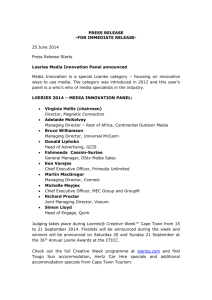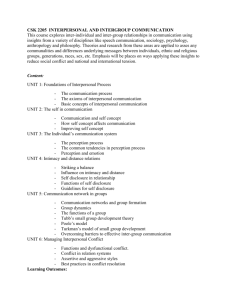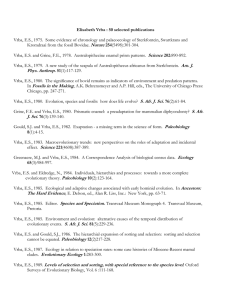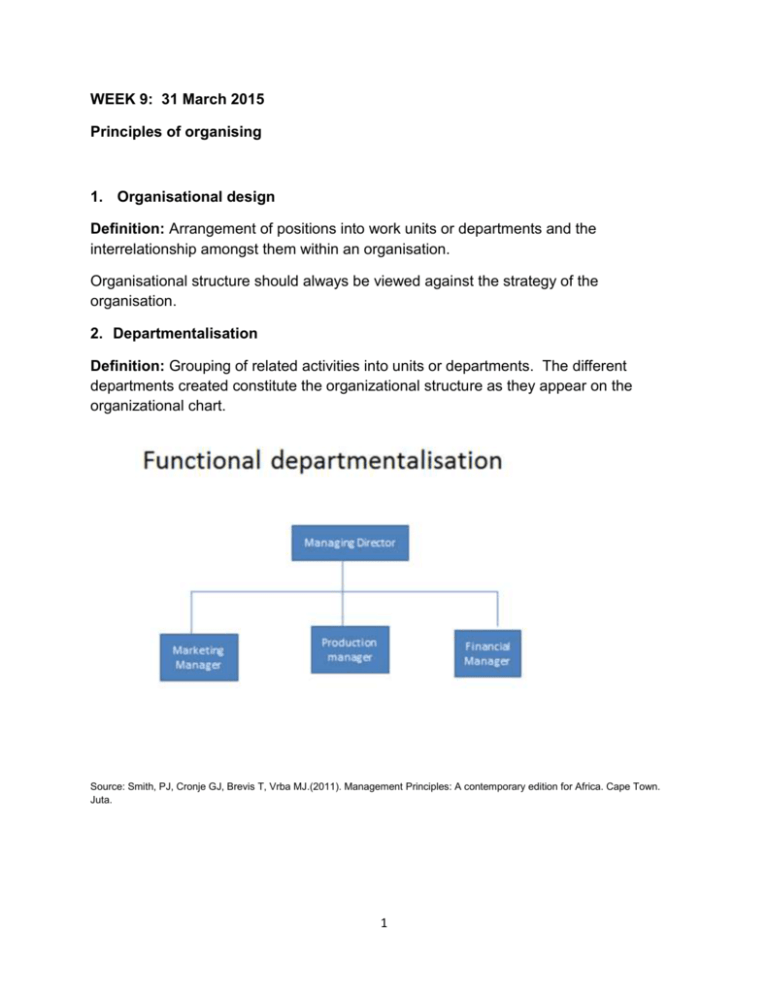
WEEK 9: 31 March 2015
Principles of organising
1. Organisational design
Definition: Arrangement of positions into work units or departments and the
interrelationship amongst them within an organisation.
Organisational structure should always be viewed against the strategy of the
organisation.
2. Departmentalisation
Definition: Grouping of related activities into units or departments. The different
departments created constitute the organizational structure as they appear on the
organizational chart.
Source: Smith, PJ, Cronje GJ, Brevis T, Vrba MJ.(2011). Management Principles: A contemporary edition for Africa. Cape Town.
Juta.
1
3. Functional Departmentalisation
The activities belonging to each management function are grouped together for
example advertising, marketing research and sales under marketing. This structure is
used in organisations with a single product focus. In order to build competitive
advantage in providing their products or services organisations require well-defined
skills and areas of specialisation.
Advantage: Enables staff to focus on area of expertise
Disadvantage: Challenge is with co-ordination of specialist functions
Source: Smith, PJ, Cronje GJ, Brevis T, Vrba MJ.(2011). Management Principles: A contemporary edition for Africa. Cape
Town. Juta.
4. Product departmentalization
All activities concerned with manufacturing of a particular product or group of products
are grouped together in product sections.
Advantages: Specialised knowledge on specific products are used to maximum, quick
decisions within a section, performance of each group can easily be separately
measured
Disadvantages: Managers in particular section concentrate exclusively on their
particular products, Admin costs increase with each section having their own functional
specialists i.e. market researchers, financial experts etc.
2
Source: Smith, PJ, Cronje GJ, Brevis T, Vrba MJ.(2011). Management Principles: A contemporary edition for Africa. Cape Town.
Juta.
5. Location Departmentalisation
This is a logical structure for businesses manufacturing and selling in different
geographical regions. The structure gives autonomy to area managers
Advantage: Facilitate decision making and adjustment to local business environments.
3
Source: Smith, PJ, Cronje GJ, Brevis T, Vrba MJ.(2011). Management Principles: A contemporary edition for Africa. Cape Town.
Juta.
6. Customer Departmentalisation
Appropriate when concentrating on particular market segment or group of customers
Same advantages and disadvantages as product Departmentalisation
Multiple departmentalizations: Can use several departmental structures to create
hybrid/mixed organization. The following mixtures/combinations can be used: Matrix
departmentalization; Divisional departmentalisation (Strategic business units); Network
structure; New venture units; Team approach and virtual network approach.
4
Source: Smith, PJ, Cronje GJ, Brevis T, Vrba MJ.(2011). Management Principles: A contemporary edition for Africa. Cape Town.
Juta.
7. Matrix Departmentalisation
Combines functional and product departmental structures. The employee works for
functional department but is also assigned to different products/projects.
Advantages: Flexibility and high accountability. The major strength of the matrix is that
it can facilitate coordination of a multiple set of complex and interdependent projects
while still retaining the economics that result from keeping functional specialists grouped
together.
Disadvantages: Each employee reports to 2 superiors – functional and project
superior, violates unity of command, coordination also difficult. The major
disadvantages of the matrix are the confusion it creates and its propensity to foster
power struggles.
5
Source: Smith, PJ, Cronje GJ, Brevis T, Vrba MJ.(2011). Management Principles: A contemporary edition for Africa. Cape Town.
Juta.
8. Divisional departmentalisation
Large, complex, global organisations with related products and services
departmentalised into semi-autonomous strategic business units. E.g. Mineral and
metals producer of coal, iron ore, zinc. Related products but require different
operations.
6
Source: Smith, PJ, Cronje GJ, Brevis T, Vrba MJ.(2011). Management Principles: A contemporary edition for Africa. Cape Town.
Juta.
9. Network structure
Groups of employees who volunteer to develop new products or ventures. They use a
form of matrix structure. When project is complete can adopt any of following
structures:
•
•
•
New products can become part of traditional departmentalisation, functional,
product etc
products are developed into totally new department
new products grow into divisions
10. Team approach - This is a most widespread trend in departmentalisation in recent
years. Vertical chain of command is a means of control but passing all decisions up
the hierarchy takes too long. This approach gives managers way to delegate
authority and push responsibility to lower levels. More flexible and responsive in
competitive global environment.
11. Virtual network approach:
It is not necessary to have all employees, departments etc in one office or facility. In
virtual organisation people who are spread out in remote locations work as they are in
7
one place through technology. Advantage: Provides flexibility and efficiency for
partnerships. Disadvantage: Levels of reciprocal and sequential interdependence are
higher than network organization. E.g. electronic commerce, extranet, intranet etc.
12. Job design: Definition: Process of combining the tasks that each employee is
responsible for. Once the organizational structure is in place, managers must
consider the design of jobs to motivate incumbents to contribute to goals.
Job design has an impact on job satisfaction and productivity. One can empower staff
members by allowing them to be involved in designing their own jobs.
Motivating elements:
Job specialization/Job simplification – narrowing down activities to simple, repetitive
routines. Useful where employees are illiterate and inexperienced.
Job expansion – process of making a job less specialized: Jobs can be expanded
through:
•
Job rotation – performing different jobs for a set period of time
•
Job enlargement – when employee carries out a wider range of activities of
approximately the same level of skills such as a typist whose job is enlarged to
include general administration tasks.
•
Job enrichment – It gives more depth to a job and allows the employee to, for
example, plan his own activities. Here the work activities of a unit of the business are
combined vertically. Employees accept additional responsibility to plan, execute and
control their own work
Two forms of job enrichment:
•
development of work teams
•
the job character models
References
Smit, P.J., Cronje, G. J., Brevis, T., Vrba, M. J. (2011). Management principles. A
contemporary edition for Africa. (5th Ed..). Cape Town, Juta.
Robbins, S. P, DeCenzo, D. A. (2005). Fundamentals of Management: essentials
concepts and applications. (5th Ed.).. New Jersey, Pearson Prentice Hall.
8
9




